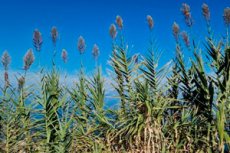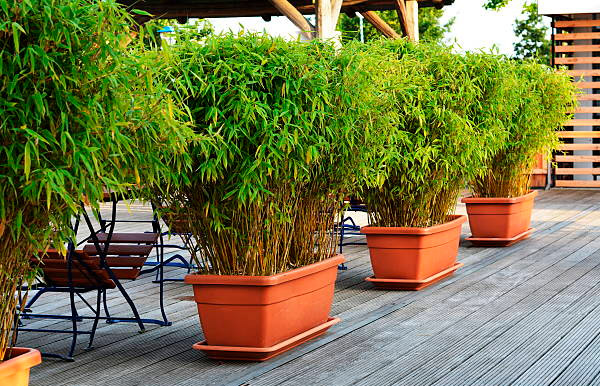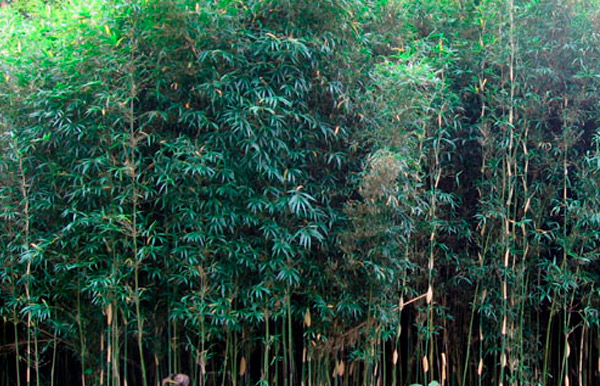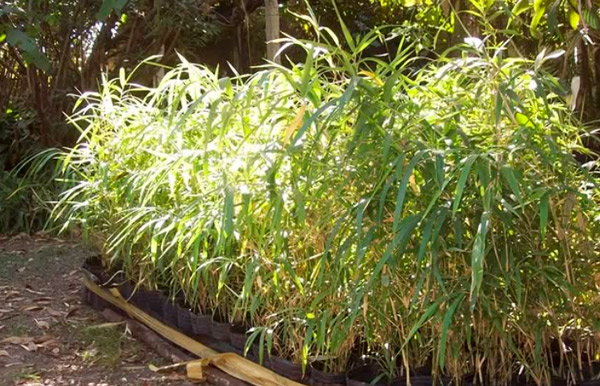New publications
Plants
Arundinaria
Last reviewed: 29.06.2025

Arundinaria is a genus of perennial herbaceous plants from the poaceae family, comprising about 15 species. These plants are commonly found in east asian regions such as china, japan, and korea, as well as in parts of north america. Arundinaria is known for its ornamental value and is used for both landscaping and creating hedges and screens. Due to its flexibility and resilience, Arundinaria is widely applied in landscape design to decorate gardens, parks, and private properties.
The distinctive feature of Arundinaria is its ability to thrive in various climatic conditions, from tropical to temperate zones, making it a versatile plant for vertical landscaping. These plants can reach considerable sizes, forming dense thickets, making them an excellent choice for creating hedges and privacy screens in landscape design.
Etymology of the name
The genus name "Arundinaria" is derived from the latin word "arundo," meaning "reed" or "reed plant." this name is linked to the characteristic appearance of the plant, which has hollow stems resembling reeds. The suffix "-aria" in botanical terminology is often used to denote genera that have similar characteristics—in this case, the reed-like stems.
The genus name reflects the plant's primary feature — reed-like stems that provide it with lightness and ornamental value. It also emphasizes its botanical relationship with other reed and bamboo species.
Life form
Arundinaria is a perennial herbaceous plant that forms dense shrub-like thickets with tall stems. These plants can grow to several meters in height, depending on the species, and form compact groups, making them ideal for natural fencing and screening. The plants grow and spread actively, producing numerous shoots.
Like most bamboo species, Arundinaria has the ability to spread quickly through its rhizomes, which helps it expand. This makes it suitable for use in landscaping as a groundcover plant or for creating decorative fences.
Family
Arundinaria belongs to the poaceae family, which includes more than 10,000 plant species known for their importance both in agriculture and ecology. Grass plants share several common features, such as hollow stems, alternate leaves, and specific flower structures.
The poaceae family includes not only forage and cereal plants such as wheat, rice, and corn but also ornamental species like Arundinaria, bamboo, and other related plants. Arundinaria is part of the bambusoideae subfamily, placing it in line with bamboos, which are known for their rapid growth and high ornamental value.
Botanical characteristics
Arundinaria is a grass with hollow stems that can reach heights of 1.5–4 meters, depending on the species. The plant's leaves are narrow, linear, and pointed, typically green, though they may take on yellowish hues under bright lighting. The flowers are arranged in clusters, which can either be solitary or in panicles, depending on the species.
Arundinaria’s roots form a well-developed root system, which facilitates its rapid spread and the formation of new shoots. The hollow stems make the plant light and flexible, helping it adapt to a variety of environmental conditions.

Chemical composition
Like other plants in the poaceae family, Arundinaria contains a range of organic substances such as cellulose, carbohydrates, and small amounts of proteins. These components make it useful for animal grazing. However, botanically, the chemical composition of Arundinaria does not feature particularly high concentrations of active compounds.
It is important to note that Arundinaria is not toxic and is not used in medicine for extracting chemical substances. It is mainly used as an ornamental plant or for landscaping, and its stems can be employed in construction and crafts.
Origin
Arundinaria originates from east asia, including china, japan, and korea, where it is found in forests, on mountain slopes, and in river valleys. The plants of this genus are well adapted to various climatic conditions and can grow in both warm and cooler regions. Arundinaria is also found in parts of north america, where it was introduced for ornamental use.
Due to its hardiness and rapid growth, Arundinaria has become a popular plant for landscaping and use in landscape design. It thrives in conditions where other plants might struggle, contributing to its widespread presence in gardens and parks.
Ease of growing
Arundinaria is a plant that is easy to grow in various climatic conditions. It does not require much maintenance and is tolerant of both warm and moderate temperatures. The plant is not particularly sensitive to soil type but prefers well-drained areas to avoid stagnant water, which can lead to root rot.
Arundinaria does not require frequent watering, making it an ideal choice for gardeners seeking a low-maintenance plant. It is drought-tolerant but benefits from regular moisture during its active growing period.
Species and varieties
There are about 15 species of Arundinaria, each with its own characteristics. One of the most popular species is Arundinaria gigantea (giant bamboo), known for its rapid growth and tall stems reaching 3–4 meters. Other species, such as Arundinaria japonica (japanese bamboo), are smaller and can be used to create compact green screens.

Arundinaria gigantea

Arundinaria japonica
There are also varieties with different shades of green leaves and varying stem densities. Some varieties of Arundinaria have more decorative flowers, while others are more cold-resistant, allowing for selection based on the growing conditions.
Size
The size of Arundinaria depends on its species and growing conditions. Under ideal conditions, species like Arundinaria gigantea can grow up to 4 meters in height, forming dense bushes or vines. Smaller species, such as Arundinaria japonica, stay within 1–2 meters.
The size of the plant also depends on whether it is grown in containers or in the open ground. In limited space, such as in a pot, Arundinaria will grow slower and remain compact.
Growth rate
Arundinaria grows quite rapidly, especially during the warmer months. In conditions where it receives adequate water and sunlight, the plant can spread several centimeters a week, particularly during the first few years after planting. Its root system and stems develop quickly, promoting active growth.
In the winter period, growth slows down, and the plant may enter a dormant phase. However, with proper care, Arundinaria retains its ornamental appeal even in colder months.
Lifespan
Arundinaria is a perennial plant that can live for many years, provided it receives proper care. Under ideal conditions, such as the appropriate climate and proper maintenance, Arundinaria can remain ornamental and viable for several decades.
To maintain the plant's health and extend its lifespan, it is important to periodically refresh the soil and perform pruning, as well as to avoid overwatering, which can lead to root rot.
Temperature
Arundinaria prefers warm conditions, with temperatures ranging from 18 to 30°c. The plant is not frost-tolerant, and temperatures below 10°c can cause its death. During the winter period, the temperature should be maintained at no less than 12°c to prevent the plant from dying.
When growing in colder regions, Arundinaria should be protected from the cold or grown in containers that can be moved to a warmer location during the winter.
Humidity
Arundinaria prefers moderate humidity. It grows well in air humidity around 50–60%. In dry conditions, the plant may start losing leaves and slow down growth, signaling stress. For optimal conditions, humidifiers or regular misting of the plant's leaves can be used.
In higher humidity, Arundinaria grows faster and looks more decorative, especially during the summer months.
Lighting and room placement
Arundinaria prefers bright but diffused light, making it an excellent choice for rooms with east- or west-facing windows. Direct sunlight can cause leaf burns, so it is best to avoid exposure to direct rays. The ideal place for Arundinaria is a location where it receives enough light without being exposed to intense sun. In the shade, the plant will grow more slowly, and its ornamental qualities may decrease.
If the room lacks sufficient natural light, Arundinaria can be supplemented with artificial lighting. Special grow lights, which provide the necessary wavelengths for photosynthesis, are ideal for this purpose. Additionally, a stable temperature is crucial for Arundinaria, so it should not be placed in areas with sharp temperature fluctuations, such as near air conditioners or heating devices.
Soil and substrate
Arundinaria prefers well-drained, loamy soil with a balance of moisture retention and aeration. The ideal soil mix should consist of garden soil, peat, sand, and perlite in a ratio of 2:1:1:1. This mixture helps retain moisture while ensuring proper drainage, which is crucial for preventing root rot. Perlite and sand improve aeration and prevent soil compaction, allowing the roots to breathe.
The recommended ph of the soil for Arundinaria is slightly acidic, between 5.5 and 6.5, which promotes the optimal absorption of nutrients. It is important to add a drainage layer at the bottom of the pot, using materials like expanded clay or gravel, to ensure that excess water can escape and prevent waterlogging around the roots.
Watering (summer and winter)
During the summer, Arundinaria requires regular watering but should not be overwatered. The soil should remain consistently moist but not waterlogged. It is important to allow the top layer of soil to dry out slightly between waterings, as overwatering can lead to root rot. The plant thrives in humid conditions, so ensuring that the surrounding air is moist can benefit its overall health.
In winter, watering should be reduced significantly, as Arundinaria enters a dormant phase. During this time, the plant requires much less water, and the soil should be allowed to dry out a bit more before watering again. Care should be taken not to leave water in the saucer, as stagnant water can cause the roots to rot. Always adjust the watering frequency based on the plant's seasonal needs.
Fertilization and feeding
Arundinaria benefits from regular fertilization during its active growing season, typically from spring to autumn. A balanced fertilizer containing nitrogen, phosphorus, and potassium can be used to support healthy growth and promote lush foliage. Fertilization should be applied every 4-6 weeks during the growing season, either in the form of a liquid fertilizer diluted with water or a slow-release granular fertilizer.
In the winter months, when the plant is dormant, it is best to refrain from fertilizing, as the plant's growth slows down, and it is not actively absorbing nutrients. Over-fertilizing during this time can lead to an accumulation of salts in the soil, which may harm the plant. Resume feeding in the spring as the plant starts to grow again.
Flowering
Flowering in Arundinaria occurs during the warmer months, typically in late spring to early summer, depending on the species and the growing conditions. The plant produces inconspicuous flowers that are often overshadowed by its beautiful leaves. The flowers are small, typically grouped in spikes or panicles, and may not be as visually striking as those of other ornamental plants. However, they add to the overall health and vitality of the plant.
Though not known for large or showy flowers, Arundinaria’s blooms still provide an essential ecological function by attracting pollinators such as bees and butterflies. Regular flowering indicates the plant's healthy growth and its ability to adapt to the environment.
Propagation
Arundinaria can be propagated both from cuttings and from seeds. The most common method of propagation is through stem cuttings. In early spring, healthy stems are cut and placed in a moist, well-draining mix of peat and sand. Cuttings should be kept in a warm, humid environment to encourage root formation, which typically takes around 2-3 weeks.
Seed propagation is less commonly used due to the longer time required for germination and the need for specific temperature conditions. Seeds should be sown in well-drained soil and kept moist. Germination typically takes between 3 to 6 weeks, and seedlings may take several years before they are mature enough to flower.
Seasonal features
Arundinaria has distinct seasonal growth patterns. In the warmer months, the plant grows actively, producing new shoots and leaves. This period requires adequate watering, regular feeding, and a warm environment to support optimal growth. In this phase, the plant can rapidly spread and form dense clusters, making it an excellent choice for creating natural barriers or ground cover.
In winter, Arundinaria enters a dormant phase where growth slows significantly. The plant requires less water and should be kept in a cooler, more sheltered location. During this time, the plant will not require fertilizer, and excessive watering should be avoided to prevent damage to the root system.
Care features
Arundinaria is relatively easy to care for, but it requires some attention to thrive. The plant benefits from regular pruning to remove dead or damaged stems and promote new growth. It should be kept in an environment where temperature fluctuations are minimal, as it does not tolerate sudden changes in temperature well. A consistent watering schedule is also essential to maintain its health.
While the plant can tolerate a wide range of conditions, ensuring it has sufficient light and space to grow is key to promoting healthy development. Regularly checking the plant for pests or diseases is also essential for preventing any long-term damage.
Indoor care
Arundinaria can be grown indoors, provided it receives adequate light and humidity. It should be placed in bright, indirect light to avoid leaf burn from direct sunlight. Ideally, it should be kept in a space where it can receive at least 4-6 hours of indirect sunlight each day. In low-light conditions, the plant may still grow, but it may become leggy and sparse.
To ensure the plant thrives indoors, it should be placed away from heating sources or air conditioners that can cause rapid temperature fluctuations. It is also important to maintain a moderate humidity level, as dry air can cause stress and slow the plant's growth.
Repotting
Arundinaria should be repotted every 2-3 years or when it becomes root-bound. When selecting a new pot, it is important to choose one that is 3-5 cm larger in diameter than the current pot to allow room for the roots to expand. The new pot should have adequate drainage holes to prevent water from accumulating at the bottom, which could lead to root rot.
Repotting is best done in spring, during the plant's active growth period. When repotting, carefully remove the plant from its old pot and gently loosen the roots. Fresh, well-draining soil should be used to provide the plant with the necessary nutrients for continued growth.
Pruning and shaping the crown
Pruning is important for maintaining the aesthetic appearance of Arundinaria. Removing dead, damaged, or overgrown stems helps the plant maintain its shape and encourages new growth. Regular pruning can also help prevent the plant from becoming too unruly and ensures it doesn’t outgrow its space.
Shaping the crown of the plant by cutting back tall stems and encouraging lateral growth can also help create a more compact, bushy appearance. Pruning should be done in early spring before new growth begins to ensure the plant responds well to the trimming.
Possible problems and solutions
Common problems with Arundinaria include root rot caused by overwatering or poor drainage. To avoid this issue, ensure that the plant’s container has good drainage and avoid leaving water in the saucer. If root rot is detected, it is crucial to repot the plant in fresh soil and trim away any affected roots.
Nutrient deficiencies can lead to weak growth and poor appearance. If the plant shows signs of yellowing leaves or stunted growth, consider fertilizing with a balanced fertilizer that includes micronutrients. Proper feeding will help restore the plant’s health and improve its overall vigor.
Pests
Arundinaria is susceptible to a variety of pests, including aphids, spider mites, and mealybugs. These pests can be controlled by regularly inspecting the plant for signs of infestation and manually removing any visible pests. For more severe infestations, insecticidal soap or horticultural oils can be used to eliminate the pests.
To prevent pest problems, it is important to maintain optimal growing conditions for Arundinaria. Healthy plants are less likely to attract pests, so keeping the plant well-watered, well-fed, and free from stress will reduce the likelihood of pest issues.
Air purification
Like many plants, Arundinaria helps purify the air by absorbing toxins such as formaldehyde and releasing oxygen. This makes it an excellent addition to indoor environments where air quality is a concern. In addition to improving air quality, it can contribute to creating a healthier and more pleasant indoor atmosphere.
Arundinaria also helps maintain humidity levels in the surrounding air, which can be beneficial in dry environments. This is particularly important in the winter months when indoor heating systems can cause air to become dry, affecting both the plant and the people living in the space.
Safety
Arundinaria is generally safe for humans, but it may cause mild irritation to the skin or eyes if handled improperly. It is recommended to wear gloves when pruning or handling the plant to avoid potential allergic reactions.
For pets, such as cats and dogs, Arundinaria is not considered highly toxic, but it can cause mild gastrointestinal upset if ingested. It is important to keep the plant out of reach of pets to prevent any accidental ingestion.
Wintering
In winter, Arundinaria enters a dormancy phase where growth slows down significantly. To ensure the plant's health, it should be kept in a cooler environment with temperatures between 12–15°c. During this period, watering should be reduced to avoid overwatering, and no fertilization should be done.
To prepare for the spring growing season, it is essential to gradually increase the temperature and light levels. This will help the plant break dormancy and start its growth cycle, encouraging new shoots and foliage.
Beneficial properties
Arundinaria is primarily valued for its ornamental properties rather than its medicinal uses. It is a resilient plant that can thrive in various conditions, making it useful for landscaping. Additionally, its dense growth provides habitat and food for various wildlife, including birds and insects.
Its aesthetic appeal, with its lush green leaves and rapid growth, makes it an attractive choice for gardeners and landscape designers looking to create natural screens, privacy hedges, or decorative borders.
Use in traditional medicine or folk recipes
Although Arundinaria is not commonly used in traditional medicine, some species of bamboo, to which Arundinaria is closely related, have been used in folk medicine for various purposes, such as treating fevers or promoting digestion. However, these uses are not well-established for Arundinaria specifically.
In folk traditions, bamboo and its relatives are sometimes used in poultices or infusions, but caution is advised as some species may have compounds that can be harmful if not prepared properly. Always consult a healthcare provider before using any plant for medicinal purposes.
Use in landscape design
Arundinaria is a popular choice in landscape design due to its aesthetic value and versatility. It is commonly used for creating dense hedges, green walls, or privacy screens. Its rapid growth and ability to adapt to various conditions make it ideal for creating natural barriers that provide privacy, reduce wind, or hide unsightly areas.
In addition to its use in garden hedging, Arundinaria can be incorporated into vertical gardens, rooftop gardens, or hanging planters, adding texture and color to these spaces. Its hardiness and dense foliage make it an excellent plant for both residential and commercial landscapes.
Compatibility with other plants
Arundinaria pairs well with a wide variety of plants in landscape settings. It can be used as a backdrop plant in garden beds, where its tall, leafy stems can complement lower-growing perennials or annuals. It also works well with other grasses, bamboos, and flowering plants that share similar growing conditions.
However, Arundinaria should be planted with consideration to its spreading habits. It may outcompete slower-growing or more delicate plants in the same area, so it is important to plan its placement carefully in relation to other plantings.
Conclusion
Arundinaria is a versatile, hardy plant that adds both beauty and function to a wide range of landscaping applications. Its rapid growth, unique appearance, and resilience to various climates make it a valuable addition to any garden or park. With proper care and attention, Arundinaria can thrive for many years, providing lush greenery, privacy, and habitat for wildlife.
Whether used as a natural fence, a groundcover, or an ornamental feature, Arundinaria’s flexibility and low-maintenance needs make it an excellent choice for both amateur and experienced gardeners alike. By following the right care guidelines, you can enjoy its beauty and benefits year after year.
